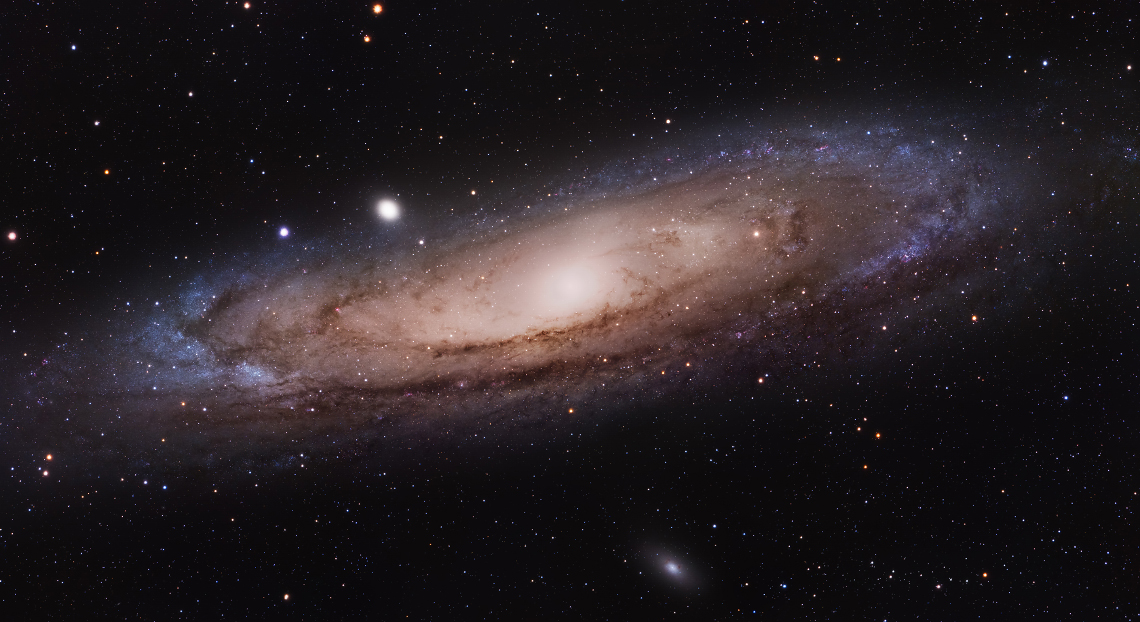Technical details:
Location / Date: Outside of Ramnäs, Västmanland, Sweden / 2014-September
Optics: Skywatcher Explorer 190MN
Mount: 10 Micron GM1000 HPS (Unguided)
Camera: Canon EOS 100D (Modded with Baader ACF filter)
Exposure:
Left part : 32x300s
Middle part: 16x120s + 26x300s
Right part : 30x300s
All shot on ISO 3200 (cumulative exposure time is 7 hours and 52 minutes)
Processing: Pixinsight and Photoshop
Image details:
The Andromeda Galaxy is a spiral galaxy approximately 2.5 million light-years (2.4×10^19 km) from Earth in the Andromeda constellation.
Also known as Messier 31, M31, or NGC 224, it is often referred to as the Great Andromeda Nebula in older texts.
The Andromeda Galaxy is the largest galaxy of the Local Group, which also contains the Milky Way, the Triangulum Galaxy, and about 44 other smaller galaxies.
The Andromeda Galaxy is probably the most massive galaxy in the Local Group as well, despite earlier findings that suggested that the Milky Way contains more dark
matter and could be the most massive in the grouping. The 2006 observations by the Spitzer Space Telescope revealed that M31 contains one trillion (10^12) stars:
at least twice the number of stars in the Milky Way galaxy, which is estimated to be 200–400 billion.
The Andromeda Galaxy is expected to collide with the Milkyway in 3.75 billion years, eventually merging to form a giant elliptical galaxy or perhaps a large disk galaxy.
(Description from Wikipedia)





